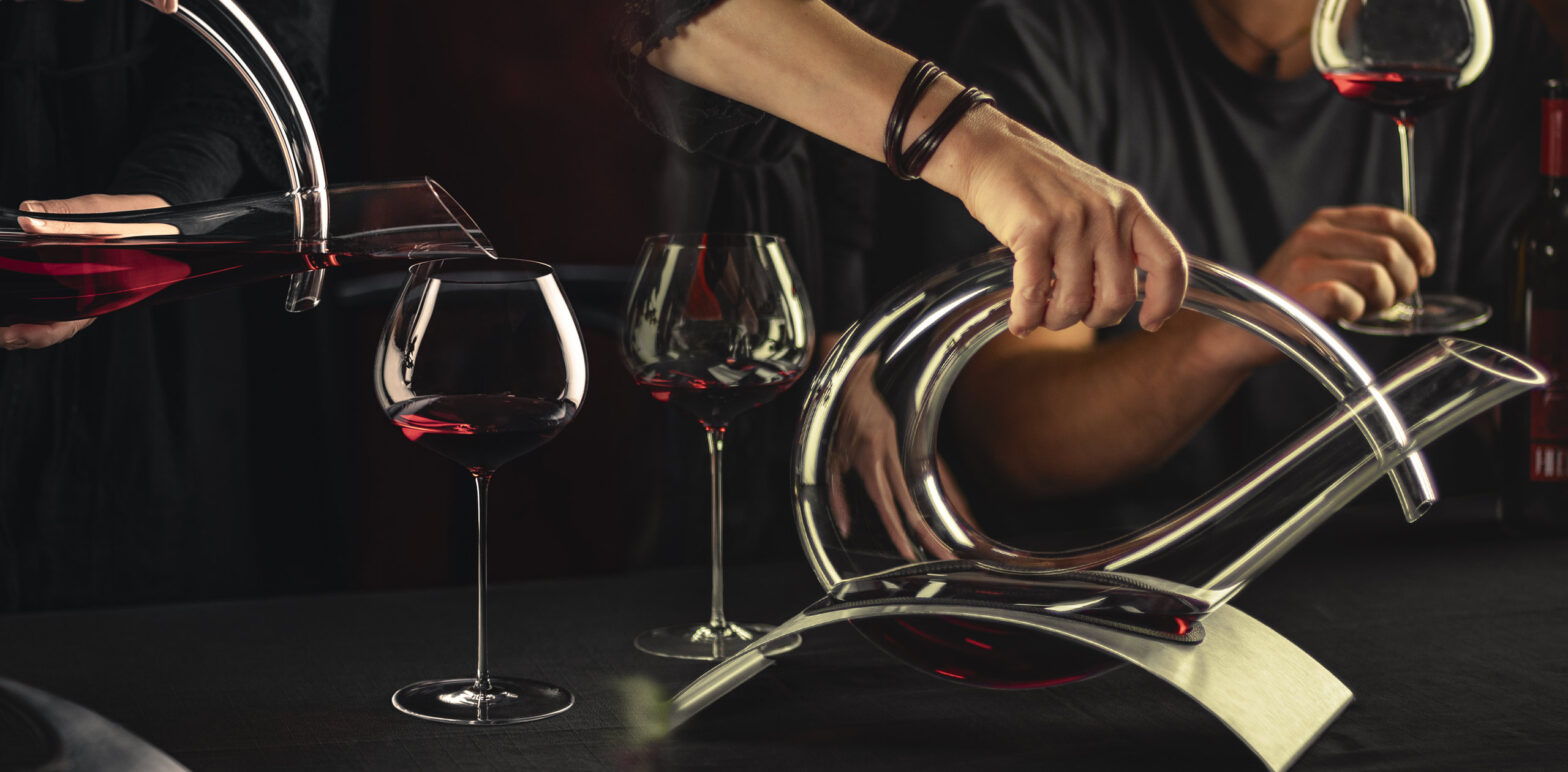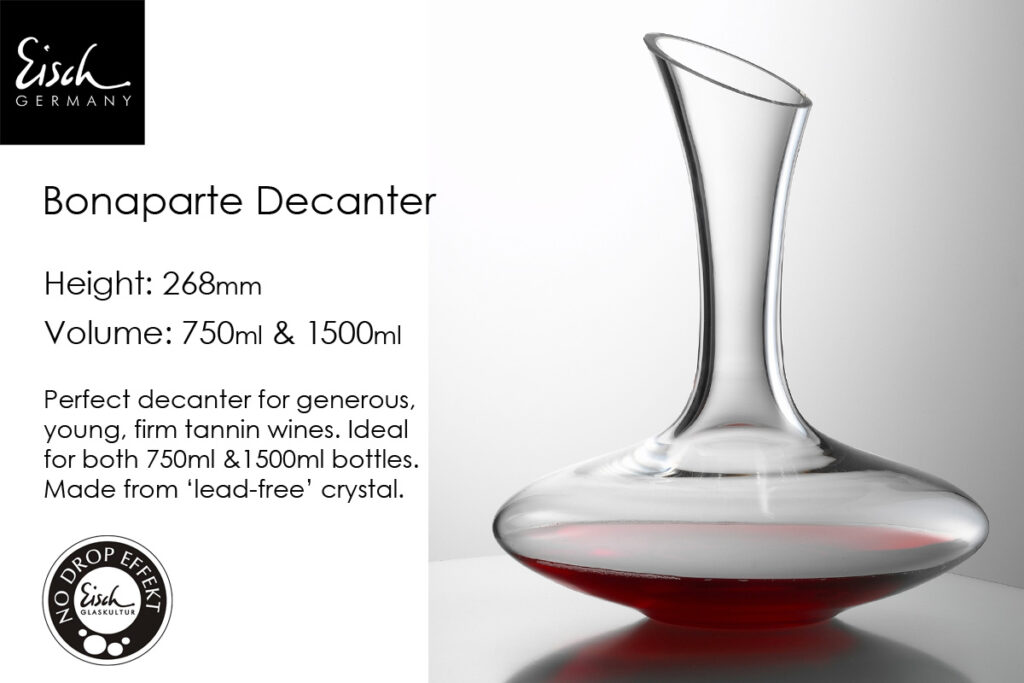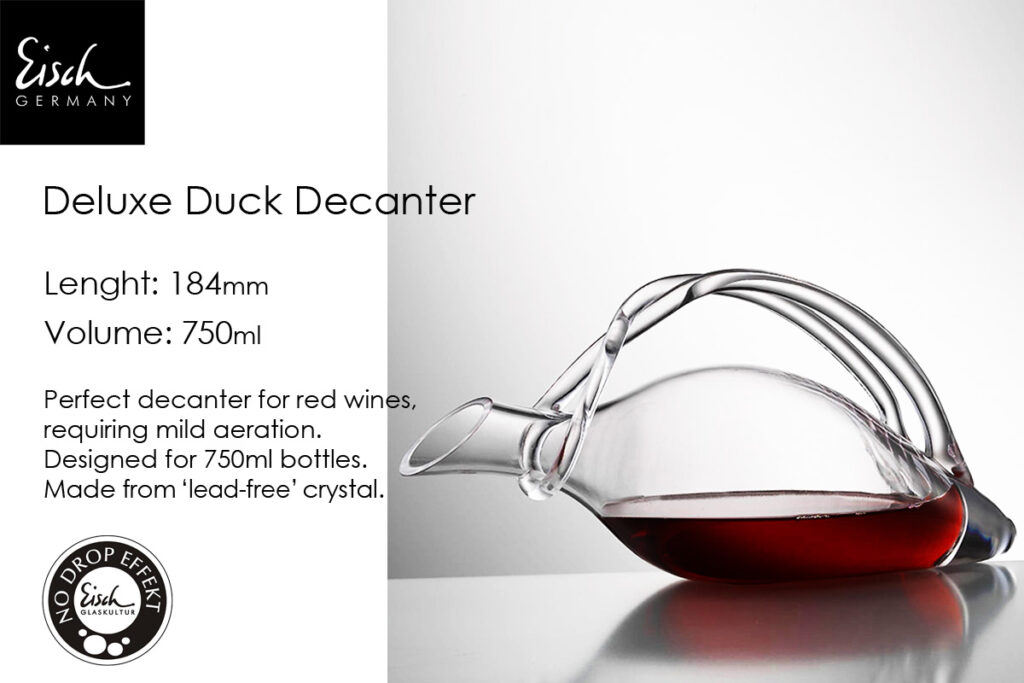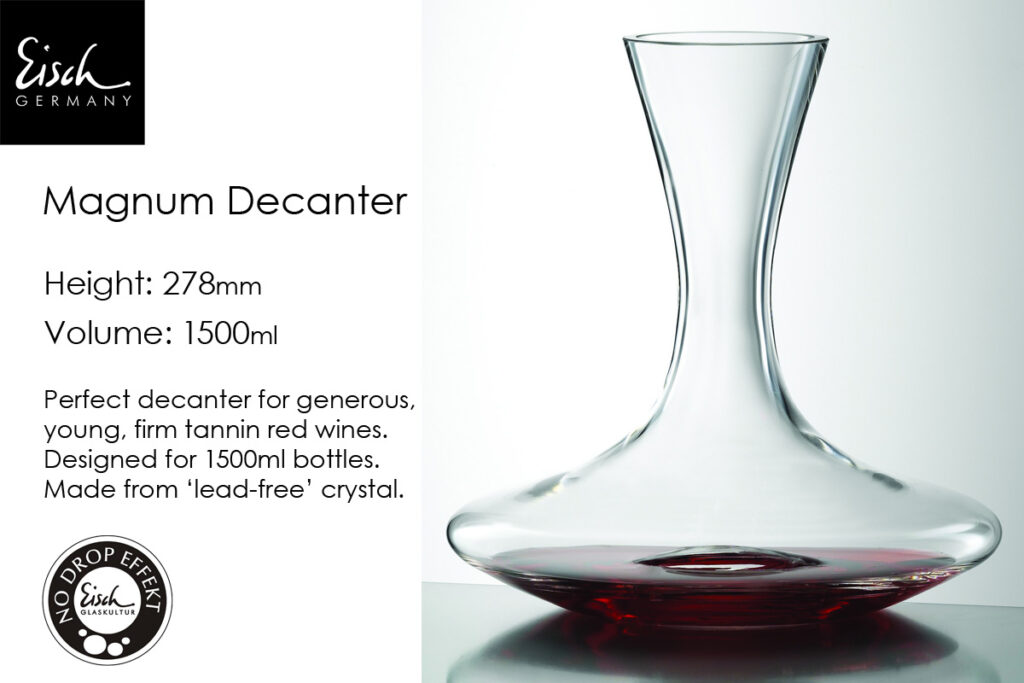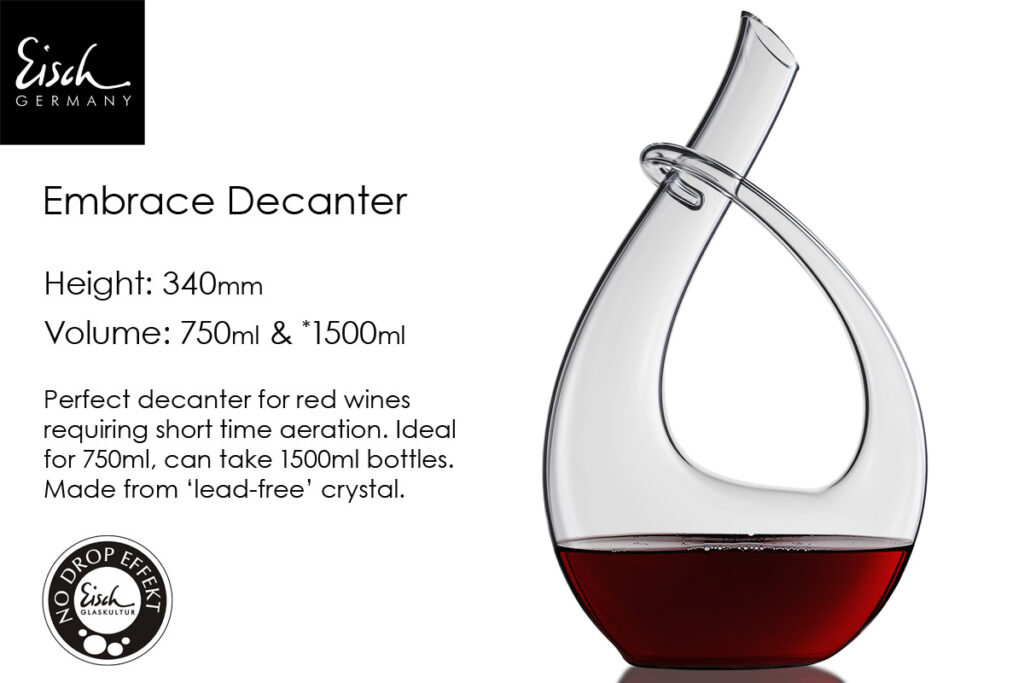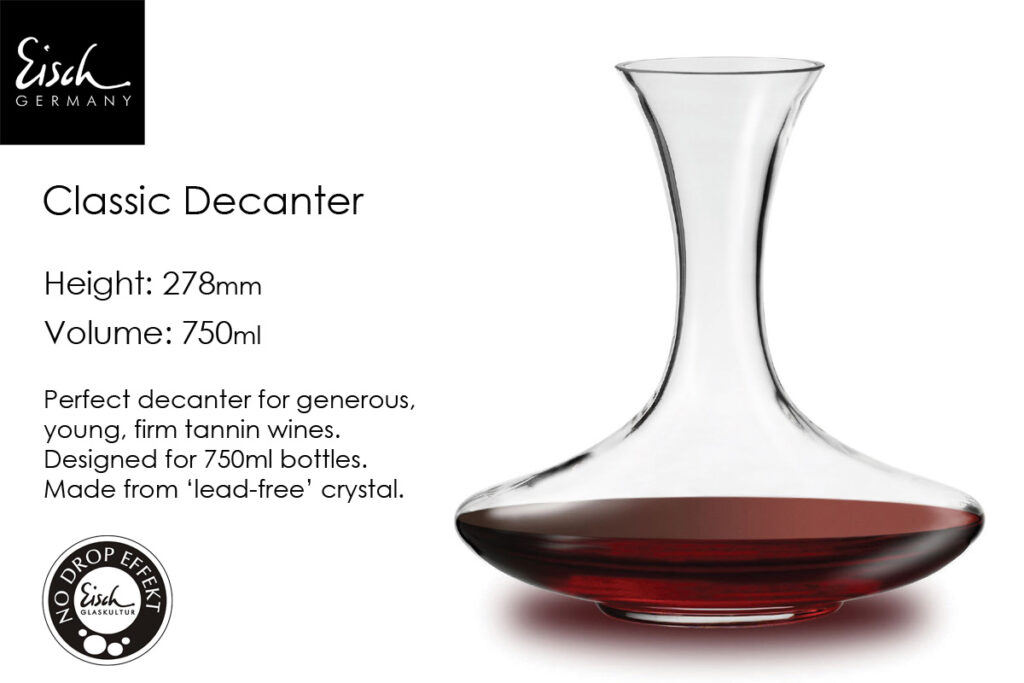Decanting Wine:
Before wines were routinely fined and filtered to a crystal clear state, it was quite common for wines poured from a bottle to be cloudy or contain a considerable degree of solid deposits. In order to avoid bringing an unsightly looking wine to the table, it was quite the norm to decant the wine into a clear receptacle. The need for such a receptacle or vessel led to the development of the varied decanters available today.
Most wines today, have no real need for decanting to the same degree as was required in the past. The modern winemaking process ensures that wine is thoroughly clarified before it is bottled, by a process of fining (passing egg whites, Bentonite clay or other substances through to fine and collect the suspended solid matter) and by mechanical filtration.
Although these wines are often best served from the bottle (after all, you have paid for a quality finished wine), many wines do benefit from some decanting - (a controlled breath of fresh air).
Wines which have aged in the bottle, typically red wines, will generally throw a sediment by ten years of age. Not only is this sediment displeasing to the eye, it can also be quite unpleasant on the palate. These are the wines that need and deserve gentle decanting, (i.e. giving wine respect).
Young wines can also benefit from decanting, although the aim is not to take the wine off any sediment (there is rarely sediment in young wines), but rather to aerate, open-up and also soften the wine. The action of decanting, the wines surface area in contact with the air inside the decanter, helps to integrate the wine, softening its youthful tannic bite, oak characters, astringency and acidity, encouraging the development of more complex and harmonious aromas that would normally develop with more years in the bottle. This also includes quality, well made, young white wines *(e.g. barrel fermented or oaked Chardonnay) - these can be cool decanted - *(shown below).
With this in mind, even inexpensive red wines can benefit from decanting, if a first taste reveals a tannic, grippy, oak, astringent structure, but good quality, ripe fruit in the background.
Having confidence in the wine and giving it time to breathe will give or regain a harmony of all these unique and exciting components, layers and flavours in the wine and bring them into balance for your senses and taste buds to enjoy. Different wines require and benefit from different lengths of time in a decanter. So speak with the retailer, or winemaker for suggestions depending upon the style and age of the wine - but most of all, do not aerate a wine for too long - and enjoy the journey.

To view a small selection of the hand-crafted, mouth-blown range of 'lead-free' crystal decanters made by Eisch in Frauenau - Germany.
Shock Decanting:
Shock Decanting (also known as splash-decanting) involves pouring a bottle of wine into a decanter while both the bottle and decanter are vertical, allowing the wine to hit the bottom of the decanter directly (as to splash off the bottom). It also involves the vigorous swirling (nearly shaking) of the decanter to add, mix oxygen into very young, tannic, closed, recently bottled red wines.
Normal decanting involves the pouring of a well aged, fragile, quality bottle of red wine into the decanter at a slight angle, slowly and gently down the inside of the glass (thus removing the wine from any sediment or deposits that might be in the bottle) and then leaving it to settle, rest and breath on its own.
Most modern, young red wines will not contain or throw any sediment so the rate and vigour of the pour is not as important. Shock decanting for young, non-integrated wines - is simply vigorously agitating in order to introduce oxygen into the wine, by swirling the wine as much as possible inside the decanter - to create a frothy layer of small bubbles on the surface of the wine, releasing the defused carbon-dioxide (CO2) in the wine.
If you know the wine well or have been informed that the young red wine does not contain any sediment and is free from any suspended material. I encourage you try 'shocking decanter' at your next dinner party. Depending upon the shape of your decanter - you can also pour the wine down the far side of the decanter, but with more vigour, agitation and speed than normal - (as shown below).
I know that this sounds aggressive and is only suitable for a few wines. But you are seeing it more and more around the world - in top wine bars and restaurants. Where the wine staff are completely confident in their young red wines not having any sediment and that the increased agitation and the introduction of oxygen and the removal of the dissolved CO2 helps in opening up the wine - making it more approachable and enjoyable at a young age, stage in its natural development.
At home when I am familiar with the style and age of a complex young red wine that I am opening - and I know that the wine would benefit from this technique. I will swirl the decanter with good vigour, making sure the wine does not splash out to lose any. At the ideal serving temperature for the wine in question, and only executing this technique for approximately 20-30 seconds. You will improve young, tight red wines which are closed and high in grippy firm tannins; you will not be bruising or damaging the young well-crafted wine.
This technique is typically used on young red wines - but I have also used it on quality, well-made young, oak influenced Chardonnay’s that I take straight from the fridge and perform this process (with a little less vigour) for approximately 5-10 seconds with great results. Though I find the most responsive style of wine to the technique with the best results are young, recently bottled quality Pinot Noir’s. Shock decanting can soften the youthful, assertive astringent characters in young Pinot Noir's, and can open up the fruit flavours and also improve the palate feel and finish.
Please note: do not use this aggressive method for aged or fragile red wines - as you will only result in re-suspending any sediment or crust in the wine, plus making the wine cloudy, possibly losing subtle aromas, palate texture and making the wine appear etired and even unpleasant to drink.

